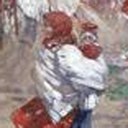0066 National Treasure or a Redundant Relic: the Roles of the Vernacular in Czech Art
Identifiers (Article)
Identifiers (Files)
Abstract
The article examines the reception of folk art in the visual culture of Bohemia and Czechoslovakia and focuses on the shift in the meaning of folk art in the period of early twentieth-century modernism. It examines closely the main attitudes and approaches to folk art in examples drawn from painting, sculpture and architecture as well as art theory in the Czech-speaking regions from the end of the nineteenth century until the early 1930s. This politically important period that saw the transformation of the Habsburg monarchy into new independent states, including Czechoslovakia, was also marked by the establishment of modernism in Central Europe. Many Czech artists were turning to more cosmopolitan ideas, while simultaneously they retained some of the ideas and ideals from the nineteenth century national revival. These shifts were reflected in the various roles folk art was given, ranging from its association with a nostalgic return to pre-industrial society, to an ideological tool of national revival, and to a redundant relic of the past. Folk art, therefore, is understood as a complex phenomenon, which disrupts the reading of modernism in Central Europe as a straightforward embrace of cosmopolitan ideas in the visual arts and art theory and that challenges the historical opposition between folk art and high art. Simultaneously, its central role in the formation of Central European modernism is emphasized as crucial to our understanding of Central European art in this period.
Statistics


License

This work is licensed under a Creative Commons Attribution-NonCommercial-NoDerivatives 4.0 International License.



